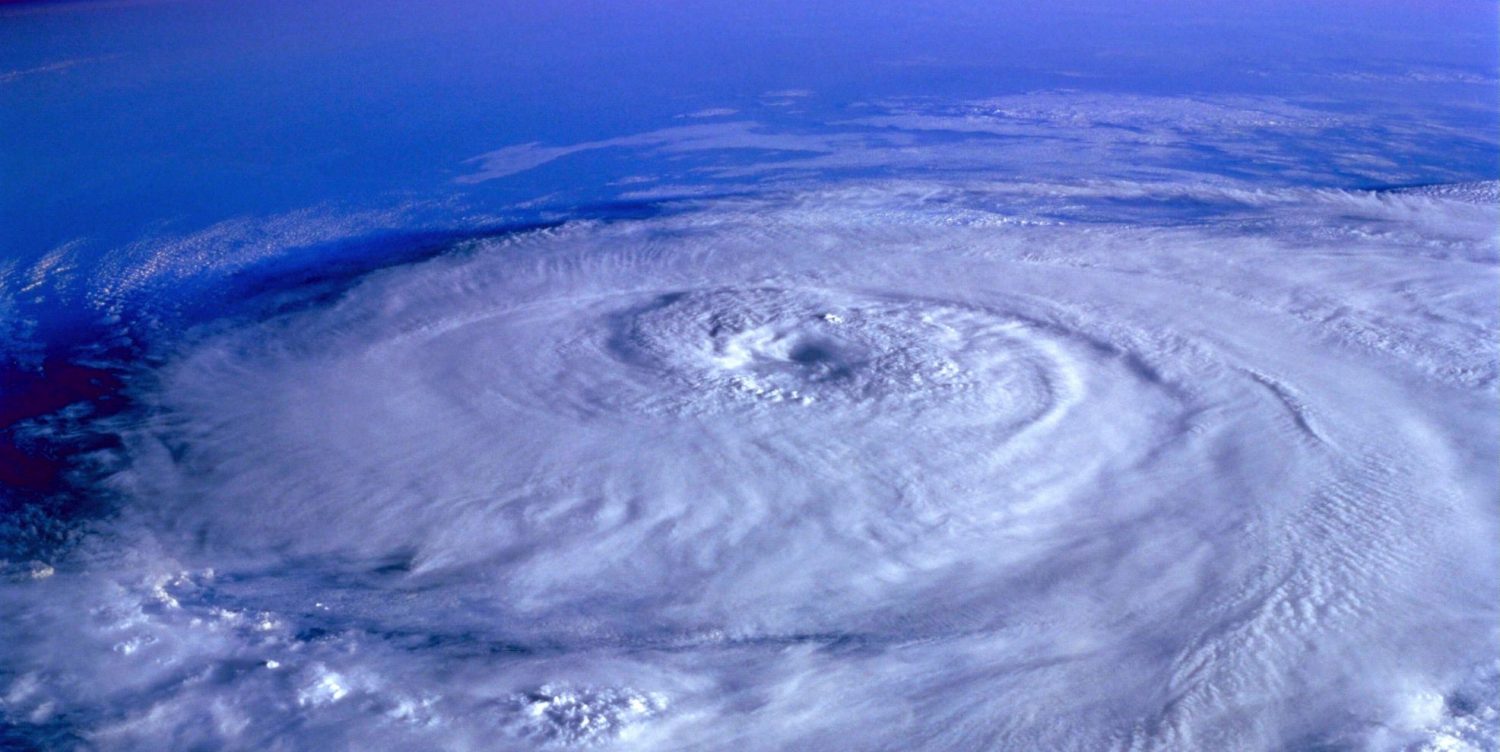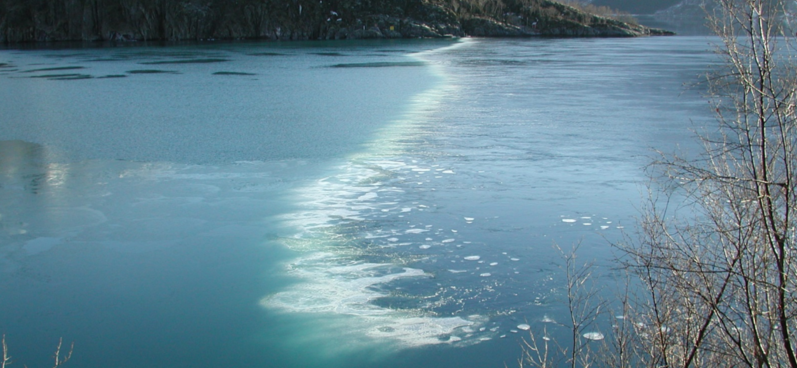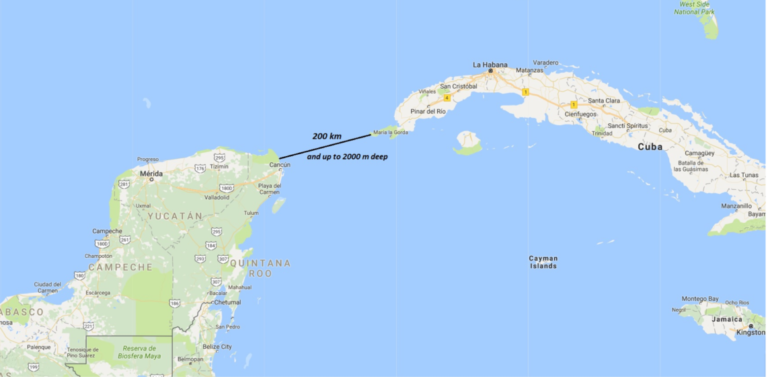Preventing Hurricanes Using Air Bubbles? Norwegian Researchers Think It Will Work
Special Stories
21 Mar 2018 9:31 AM
From SINTEF
Many people have tried to find ways of preventing hurricanes before they make landfall, resulting in the loss of human lives. Norwegian researchers believe that the answer lies in cold bubbles.
In recent years we have witnessed intense tropical storms that have taken many thousands of human lives and caused massive destruction. For example in 2005, Hurricane Katrina killed more than 2,000 people and caused damage worth about $125 billion. In 2016, Hurricane Matthew swept across Haiti, taking 852 human lives and destroying many towns on the island.
 So to the big question. Is it possible to cool the sea surface to below 80°F by exploiting colder water from deeper in the water column? Many have tried to address this problem in the past (National Geographic magazine, October 2017).
People have suggested towing icebergs to the Gulf of Mexico from the Arctic. Others have proposed seeding clouds with sea salt in order to make them whiter, thus increasing their reflectivity and so reducing sea surface temperatures. Attempts have been made to use aircraft to release dry ice in the vicinity of hurricanes with the aim of increasing precipitation as a means of dissipating energy.
“However, none of these ideas or suggestions have been great success stories”, says Eidnes.
So to the big question. Is it possible to cool the sea surface to below 80°F by exploiting colder water from deeper in the water column? Many have tried to address this problem in the past (National Geographic magazine, October 2017).
People have suggested towing icebergs to the Gulf of Mexico from the Arctic. Others have proposed seeding clouds with sea salt in order to make them whiter, thus increasing their reflectivity and so reducing sea surface temperatures. Attempts have been made to use aircraft to release dry ice in the vicinity of hurricanes with the aim of increasing precipitation as a means of dissipating energy.
“However, none of these ideas or suggestions have been great success stories”, says Eidnes.
 [A bubble curtain being used in Holandsfjord to prevent the formation of ice. Photo: SINTEF.]
[A bubble curtain being used in Holandsfjord to prevent the formation of ice. Photo: SINTEF.]
 “It’s also possible to deploy large-scale systems, for example by installing pipes across the entire Yucatan Strait, or extending them from the mainland along the coast. There is no shortage of possibilities”, says Eidnes.
The US is regularly hit by hurricanes. However, there are also areas in Asia that are affected by fatal hurricanes with the power to devastate large island communities.
“The cost-benefit potential of the SINTEF project is very great”, says Hollingsæter. “The most intense hurricanes cause communities major material damage and, in some cases, many lives are lost. This project is both meaningful and important. I hope and believe that we will succeed”, he says.
Last spring the project was granted funding from Innovation Norway in order to carry out preliminary studies. Hollingsæter now hopes and believes that these studies can be continued with funding from the Research Council of Norway.
Edited for WeatherNation by Meteorologist Mace Michaels
“It’s also possible to deploy large-scale systems, for example by installing pipes across the entire Yucatan Strait, or extending them from the mainland along the coast. There is no shortage of possibilities”, says Eidnes.
The US is regularly hit by hurricanes. However, there are also areas in Asia that are affected by fatal hurricanes with the power to devastate large island communities.
“The cost-benefit potential of the SINTEF project is very great”, says Hollingsæter. “The most intense hurricanes cause communities major material damage and, in some cases, many lives are lost. This project is both meaningful and important. I hope and believe that we will succeed”, he says.
Last spring the project was granted funding from Innovation Norway in order to carry out preliminary studies. Hollingsæter now hopes and believes that these studies can be continued with funding from the Research Council of Norway.
Edited for WeatherNation by Meteorologist Mace Michaels
Warm water is the problem
Tropical hurricanes are generated when masses of cold and warm air collide. Another essential factor is that the sea surface temperature must be greater than 80°F. “Climate change is causing sea surface temperatures to increase”, says Grim Eidnes, who is a Senior Research Scientist at SINTEF Ocean. “The critical temperature threshold at which evaporation is sufficient to promote the development of hurricanes is 80°F. In the case of Hurricanes Harvey, Irma and Maria that occurred in the Gulf of Mexico in the period August to September 2017, sea surface temperatures were measured at 90°F”, he says.Tried and tested Norwegian technology
Researchers at SINTEF now intend to save lives by using a tried and tested method called a “bubble curtain”. The method consists of supplying bubbles of compressed air from a perforated pipe lowered in the water, which then rise, taking with them colder water from deeper in the ocean. At the surface, the cold water mixes with, and cools, the warm surface water. SINTEF believes that the Yucatan Strait will be an ideal test arena for this technology. “Our initial investigations show that the pipes must be located at between 300 and 500 feet depth in order to extract water that is cold enough” says Eidnes. “By bringing this water to the surface using the bubble curtains, the surface temperature will fall to below 80°F, thus cutting off the hurricane’s energy supply”, he says, before adding that “This method will allow us quite simply to prevent hurricanes from achieving life-threatening intensities”. [A bubble curtain being used in Holandsfjord to prevent the formation of ice. Photo: SINTEF.]
[A bubble curtain being used in Holandsfjord to prevent the formation of ice. Photo: SINTEF.]
Bubble curtains keep Norwegian fjords free of ice
Norway has been using bubble curtains for many years, and researchers at SINTEF believe that these can also be used to prevent hurricanes. “For example, we use them for keeping our fjords free of ice”, says Eidnes. “During Norwegian winters, sea surface water is colder than at depth, so by lifting warmer water to the surface using bubble curtains, we can prevent the fjords from icing up”, he says. It was Olav Hollingsæter, founder of the company OceanTherm AS, who came up with the idea of cooling ocean surface waters as a means of preventing hurricanes. “It all began in 2005 when Hurricane Katrina swept over New Orleans, taking with it many thousands of human lives”, says Hollingsæter. “The hurricane’s strength was the result of high seawater temperatures, and my first thought was that we should be able to do something about this”, he says. He then contacted researchers at SINTEF, who had previously been working with curtains as a means of restricting the spread of oil spills. SINTEF supported his idea, so the project is now under way. “Our system represents no obstruction to shipping and can be implemented at both small and large scales. We can deploy bubble curtains based on oil production platforms”, he says. One area that researchers argue will be suitable for this system is the Gulf of Mexico, which is host to more than 4,000 platforms. “It’s also possible to deploy large-scale systems, for example by installing pipes across the entire Yucatan Strait, or extending them from the mainland along the coast. There is no shortage of possibilities”, says Eidnes.
The US is regularly hit by hurricanes. However, there are also areas in Asia that are affected by fatal hurricanes with the power to devastate large island communities.
“The cost-benefit potential of the SINTEF project is very great”, says Hollingsæter. “The most intense hurricanes cause communities major material damage and, in some cases, many lives are lost. This project is both meaningful and important. I hope and believe that we will succeed”, he says.
Last spring the project was granted funding from Innovation Norway in order to carry out preliminary studies. Hollingsæter now hopes and believes that these studies can be continued with funding from the Research Council of Norway.
Edited for WeatherNation by Meteorologist Mace Michaels
“It’s also possible to deploy large-scale systems, for example by installing pipes across the entire Yucatan Strait, or extending them from the mainland along the coast. There is no shortage of possibilities”, says Eidnes.
The US is regularly hit by hurricanes. However, there are also areas in Asia that are affected by fatal hurricanes with the power to devastate large island communities.
“The cost-benefit potential of the SINTEF project is very great”, says Hollingsæter. “The most intense hurricanes cause communities major material damage and, in some cases, many lives are lost. This project is both meaningful and important. I hope and believe that we will succeed”, he says.
Last spring the project was granted funding from Innovation Norway in order to carry out preliminary studies. Hollingsæter now hopes and believes that these studies can be continued with funding from the Research Council of Norway.
Edited for WeatherNation by Meteorologist Mace MichaelsAll Weather News
More